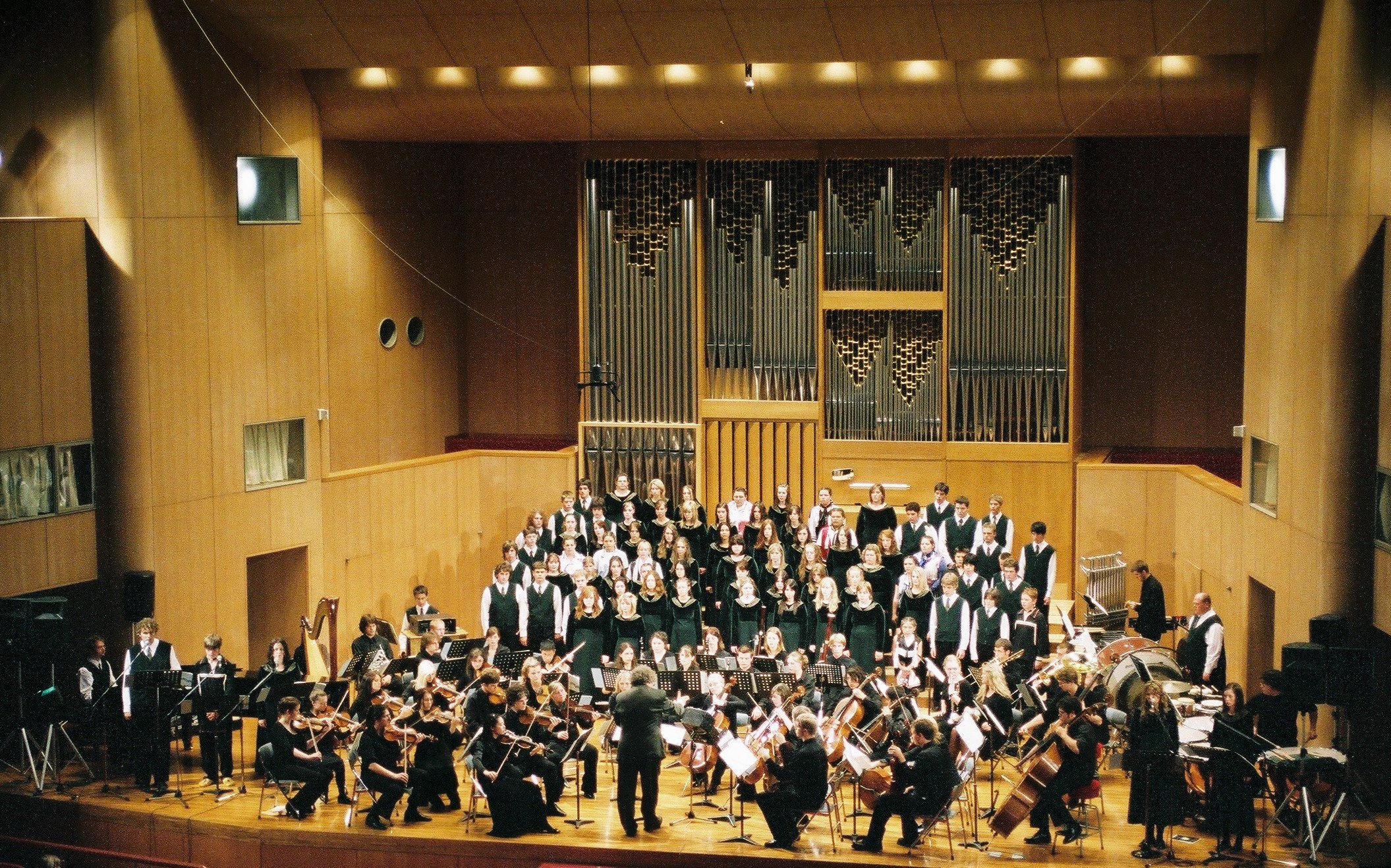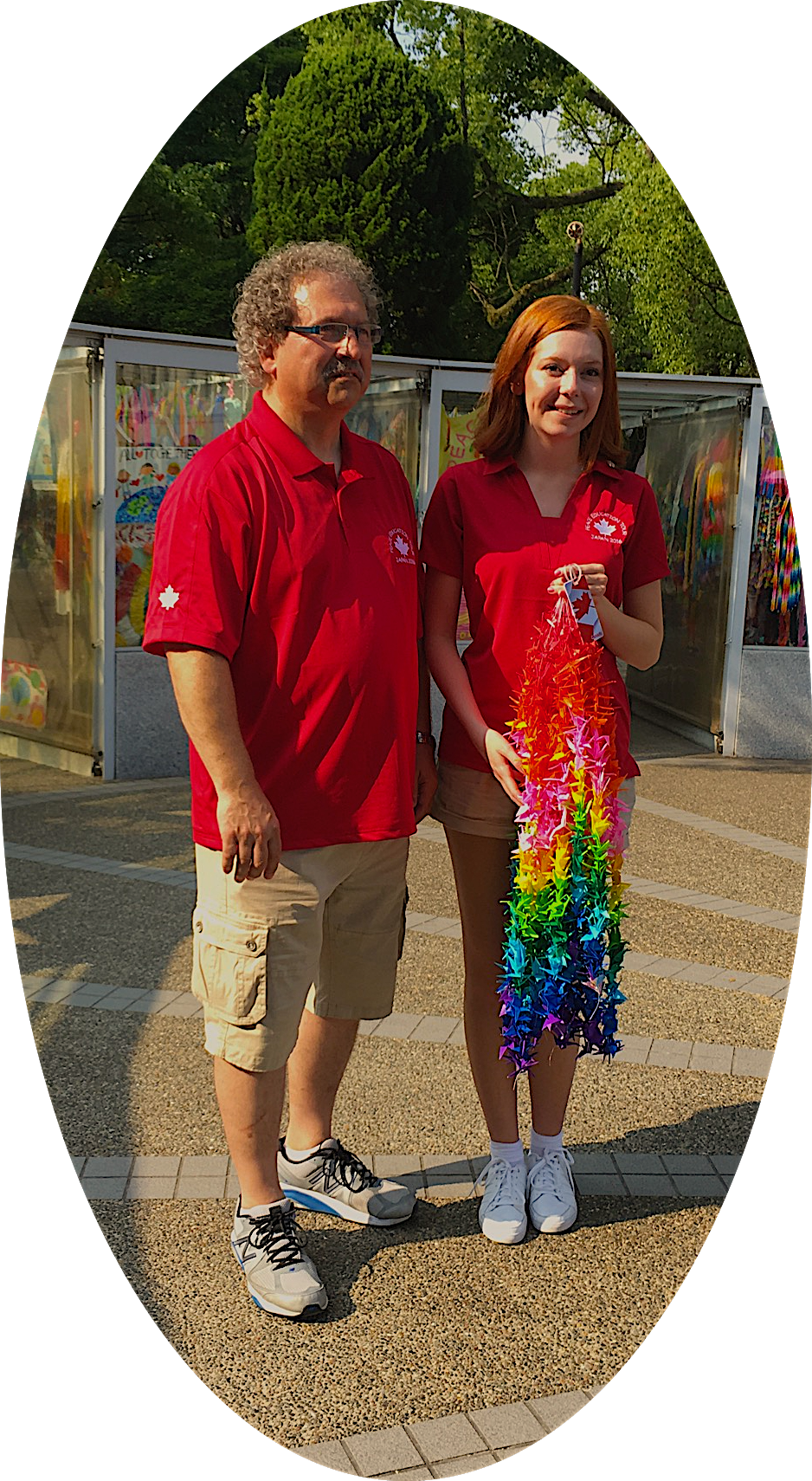2005
“When I returned from the physical shock of Nagasaki….I tried to persuade my colleagues in governments and in the United Nations that Nagasaki should be preserved exactly as it was then. I wanted all future conferences on disarmament, and on other issues which weigh the fates of nations, to be held in that ashy, clinical sea of rubble. I still think as I did then, that only in this forbidden context could statesmen make realistic judgements of the problems which they handled on our behalf. Alas, my official colleagues thought nothing of my scheme; on the contrary, they pointed out to me that delegates would be uncomfortable in Nagasaki.”
Jacob Bronowski, Science and Human Voices
The first performance tour of The Threnody Peace Education Project, in August of 2005, was to Hiroshima, Japan and featured The Mount Pearl Show Choir, the Se’t A’newey Children’s Choir of the Miawpukek First Nation of Conne River, and the Newfoundland Symphony Youth Orchestra. The performers traveled to Japan, with renowned Canadian composer, R. Murray Schafer, to perform his music, “Threnody” among the citizens of Hiroshima, at Elisabeth University. The Threnody Peace Education Project also visited and performed at significant memorial sites, including the World Peace Cathedral, the Children’s Peace Park, and the Hiroshima World Peace Memorial.
Carl Goulding reflected, “In 2005, in Hiroshima, Japan, I was the conductor of “Threnody”, a powerful Murray Schafer work for choir, orchestra and narrators. “Threnody”, meaning lamentation, is a powerfully woven musical experience that provides insight into the horrors of nuclear war as experienced by the people of Nagasaki and Hiroshima. At its conclusion, I turned around and saw the Japanese audience. Many were kneeling, and all that I could see were crying. I then saw the performers’ tears. History had been made real to these 130 young Newfoundland and Canadian musicians. The music had affected change.”
“I fought with myself for 30 minutes before I could take the first picture. After taking the first, I grew strangely calm and wanted to get closer. I took about ten steps forward and tried to snap another; but the scenes I saw were so gruesome my viewfinder clouded with tears.” – immediately after the bombing, Yoshito Matsushige , photographer from his book “The Viewfinder Clouded with Tears”
The participants also enjoyed the cultural tours of Tokyo and Kyoto, as well as a performance on the mainstage of Tokyo DisneySea for park visitors.
The participants in the Threnody Peace Education Project performed at the Canadian pavilion during the World Fair in Aichi, Japan, representing their province and their country on the world stage. Crowds of international tourists and Japanese visitors formed the audience and it was another memorable event.
The performers also participated in a cultural exchange with the teachers and students of Notre-dame Seishin Junior and High School, an enjoyable day of making music, sharing culture and making new friends. This day two groups of culturally diverse teenagers, unimpeded by the language barrier, spent the day laughing together, comparing their schools, making music and new friends.
2016 In 2016, The Threnody Peace Education Project returned to Japan with performances at the holocaust memorial sites in Hiroshima, singing at the Children’s Peace Park, the World Peace Cathedral and the Hiroshima World Peace Memorial. The performers presented a 1000 hand-folded and hand-strung paper cranes at the Children’s Peace Park to commemorate the visit. The performers toured Tokyo and participated in a cultural exchange with the Japanese students of Fukuyama Akenohoshi Joshi Junior High School. Returning to Hiroshima, Japan, marked a passing of the project to another generation of participants, carrying forth the message of the Threnody Peace Education Project, begun twenty years ago in 2002, and eleven years after the initial tour with composer R. Murray Schafer.





